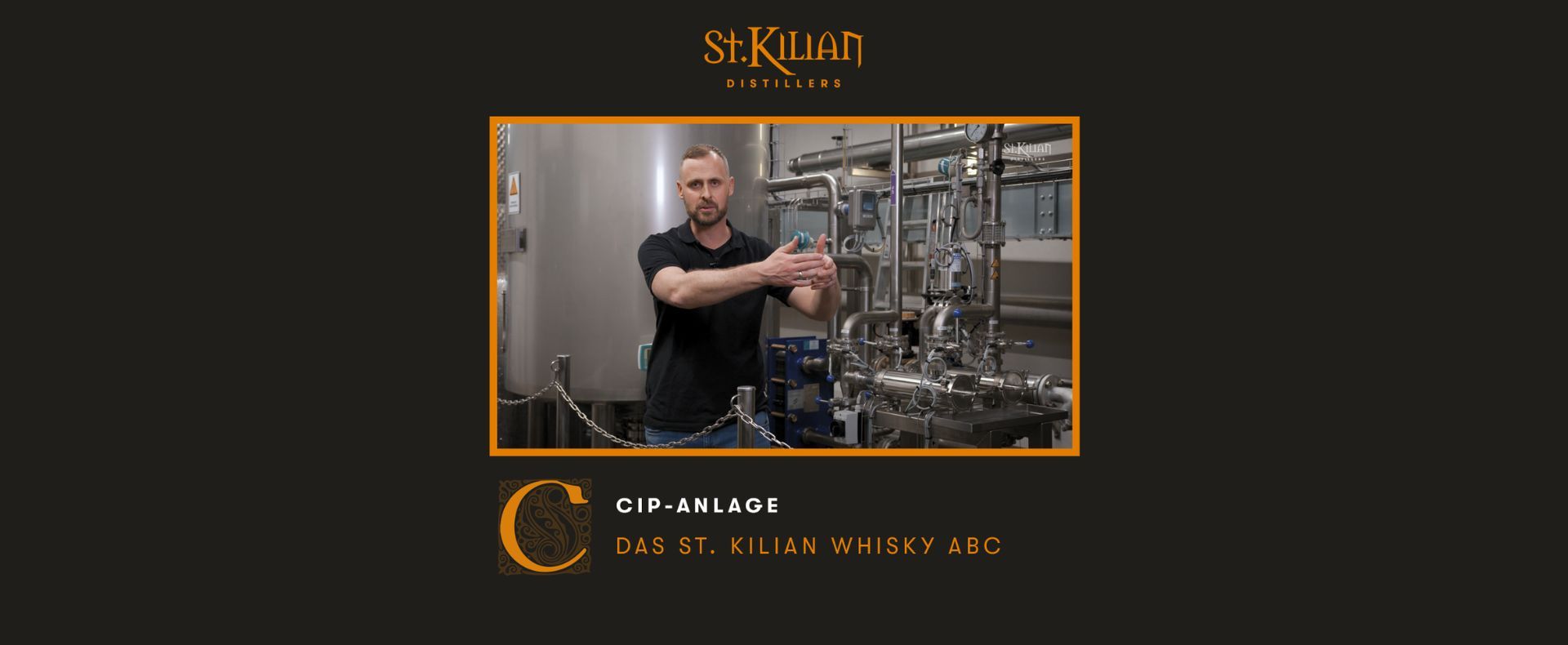C – like CIP system

What does the abbreviation CIP stand for?
CIP stands for Cleaning In Place. The German translation is “cleaning on site”. “. It refers to a special cleaning system.
What is a CIP system needed for?
The CIP system is used to clean the entire production facility at St. Kilian Distillers. Although it is not a direct part of the actual production process, it is nevertheless a crucial element of our overall production system. Such a cleaning system meets the hygiene standards in the food industry and guarantees the cleanliness of all process lines, vessels, tanks and other components. It also makes a significant contribution to maintaining productivity by ensuring that all processes run smoothly and hygienically.
What is cleaned?
The CIP system cleans all pipework, heat exchangers, tanks, filters, the Mashtun and finally our two pot stills, including the condenser and subcooler. It removes deposits and impurities, thereby preventing blockages that can occur in the fine-meshed heat exchanger plates, for example. In this way, the CIP system guarantees hygienically perfect conditions in the production plant, which means that microbial processes cannot have a negative impact on our distillers beer (= wash), for example.
What does the CIP system at St. Kilian look like?
The CIP system comprises a large stainless steel storage tank, an insulated tank for the cleaning solution, a heat exchanger and a large number of technical components such as fittings, valves, filters and pumps.
What does the cleaning solution consist of?
The cleaning solution used by St. Kilian consists of a two per cent caustic soda solution.
How does the CIP system work?
The cleaning solution is heated to around 80°C and then pumped through the various pipes to each vessel and tank. All organic residues from the entire production plant are removed by the hot caustic soda solution. This cleaning process takes place in a cycle, whereby the caustic soda is returned to the system’s storage tank.
What happens to the organic residues?
The organic residues dissolved by the caustic soda are removed by a filter system with two built-in filters as they flow back to the storage tank. However, a small proportion of the residue remains in dissolved form in the caustic soda solution.
Can the caustic soda be reused?
Yes, the cleaning solution can be used several times thanks to the recirculation principle. Once it has been heated to a temperature of 80°C, it can be brought back to a concentration of two per cent by adding caustic soda as required. Only when it is too contaminated is it disposed of.
How long does the cleaning process with the CIP system take?
Thanks to the circulation system, the entire process plant is cleaned of all organic residues within 20 to 30 minutes with the hot caustic soda solution.
What factors need to be considered when cleaning?
In order to achieve an optimum cleaning effect, we at St. Kilian take the following factors into account when planning the CIP system: Time, concentration, temperature and mechanics. The cleaning time can be set flexibly thanks to the circulation system, while the temperature can be regulated via the steam heat exchanger. To check the concentration of the caustic soda, the conductivity is measured so that it can be adjusted by adding caustic soda if necessary and kept at a value of two per cent. The mechanics can be controlled via the pump speed of the CIP feed pump and via appropriately designed spray heads in the tanks and pot stills.
Is every CIP system equipped in this way?
No. Our CIP system is a customised one-off production that has been tailored to our needs down to the smallest detail. Every company has different requirements that need to be taken into account when planning a cleaning system in order to fulfil the high hygiene standards in the food industry.